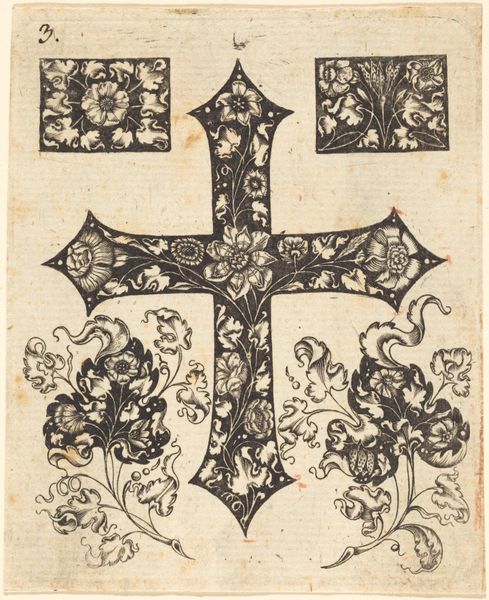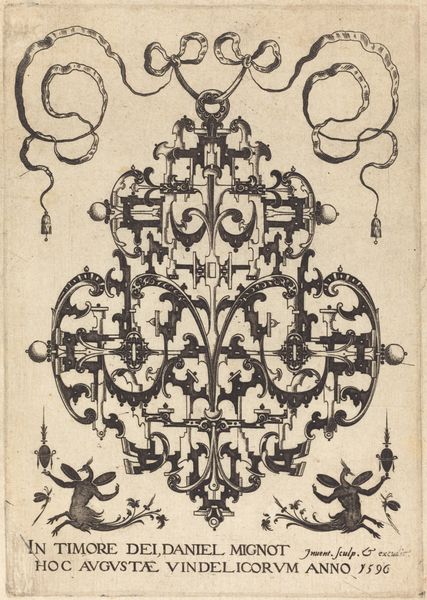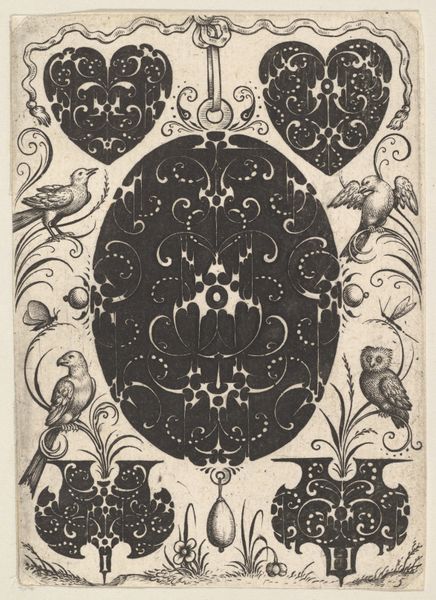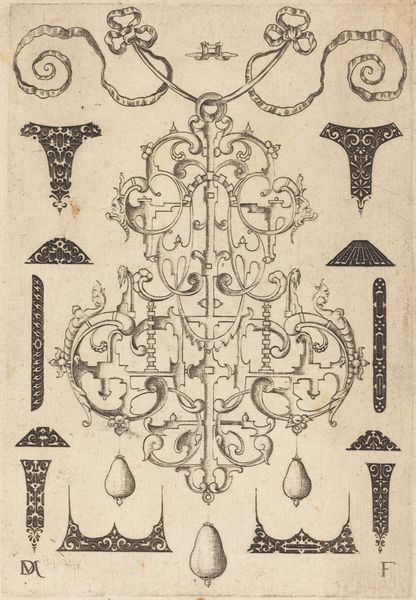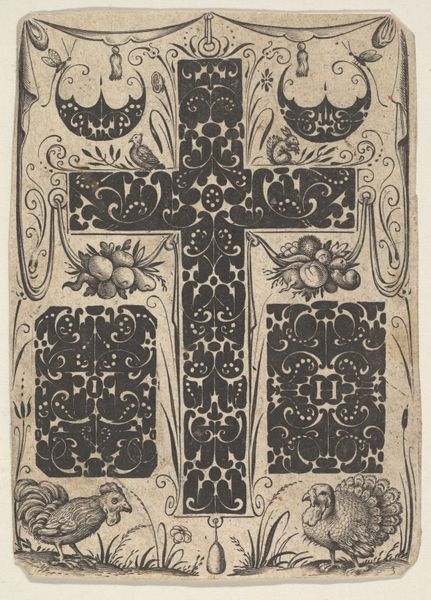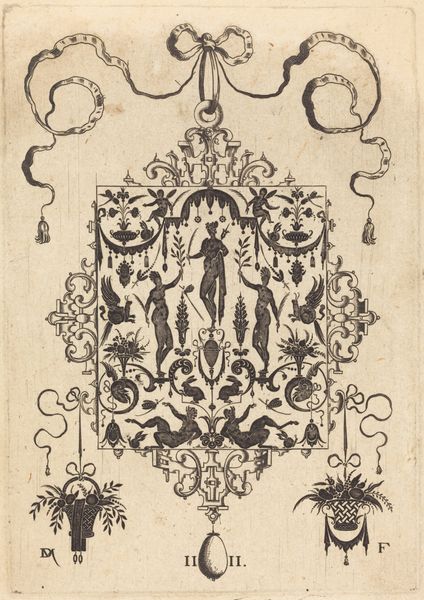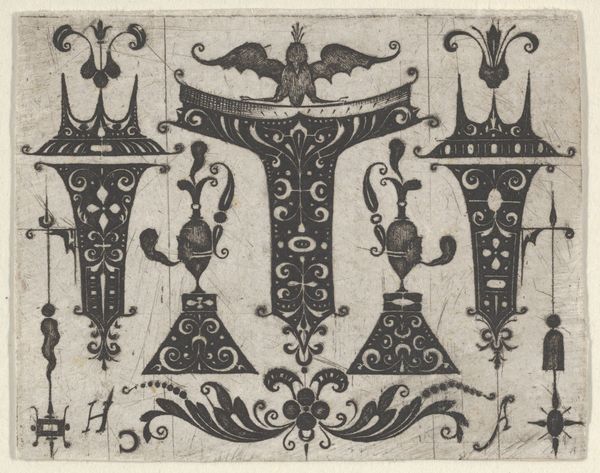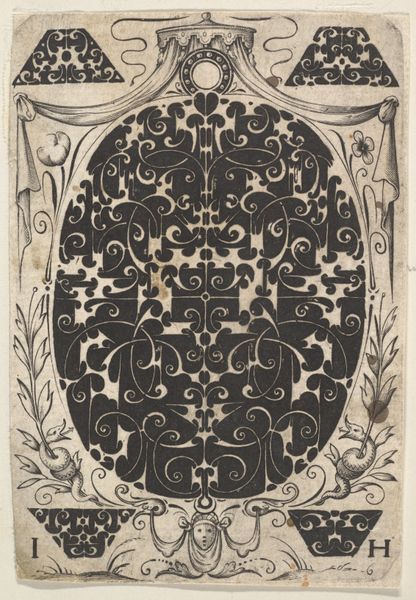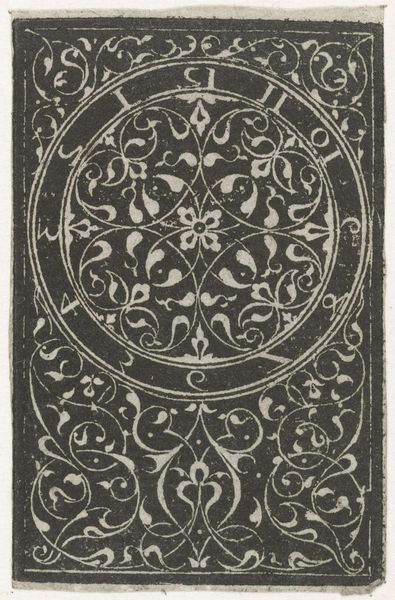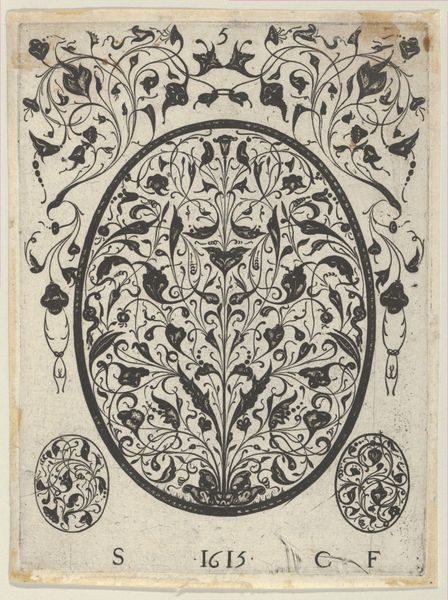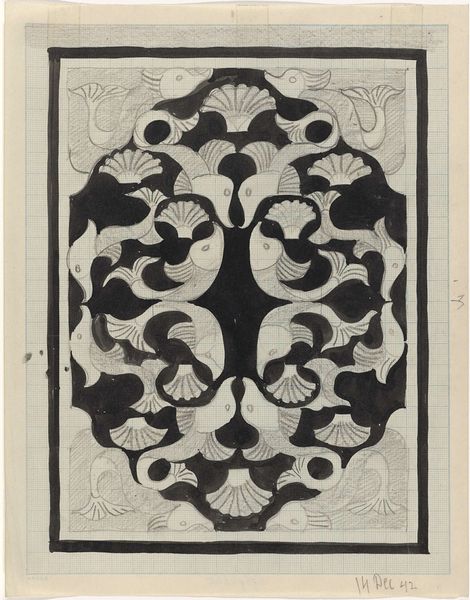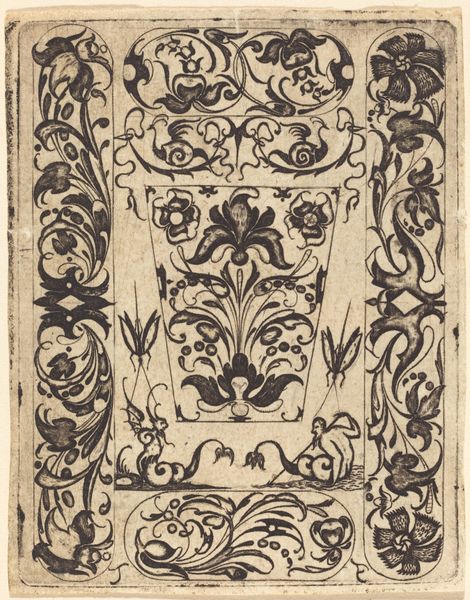
Blackwork Print with Three Crosses and Foliate Scrolls, from a Series of Blackwork Prints for Goldsmiths' Work 1615
0:00
0:00
drawing, print, intaglio, engraving
#
drawing
#
medieval
#
pen drawing
# print
#
intaglio
#
form
#
cross
#
linocut print
#
line
#
decorative-art
#
engraving
Dimensions: Sheet: 4 3/4 × 3 9/16 in. (12.1 × 9.1 cm)
Copyright: Public Domain
Curator: Looking at this striking intaglio print, "Blackwork Print with Three Crosses and Foliate Scrolls," dating back to 1615 and attributed to Etienne Carteron, the first thing that hits you is the dense, almost overwhelming, detail, doesn’t it? Editor: Absolutely, my initial impression is of controlled chaos, really. The stark contrast and intricate pattern work create a tension; it feels both decorative and quite intense. Curator: Exactly. Blackwork prints like this one were designed as models for goldsmiths. Think about the cultural weight of these crosses then: emblems of faith reinterpreted as guides to craftsmanship. The foliate scrolls further emphasize this relationship to the natural world, carefully organized as both a pattern and the continuity of rebirth. Editor: And placing it in its historical context—the early 17th century—it's hard to ignore the political undercurrent. Religious symbols served not just as expressions of piety but as markers of identity, often used to subtly challenge or negotiate the social power of the church during moments of social transformation. Curator: Indeed. These crosses are not simply about devotion; they signify social positioning, rendered through material objects. What appears ornamental is loaded with implications of power. Consider too that in Christian iconography, objects and figures serve symbolic roles—the birds for instance. Editor: Right, there are also several vessels depicted, along with vegetal and other abstracted shapes—suggesting potential commentaries on the rituals associated with Christian beliefs and hierarchies. Even the choice of blackwork itself—mimicking embroidery—implies gendered labor of the period in connection to artisanal professions and religious belief. Curator: The series "Blackwork Prints for Goldsmiths' Work" provides insight into not only how these religious forms influenced artisanal craft, but also into a collective memory tied to religious affiliation, economics, and cultural practice during times of significant upheaval. Editor: It shows us how seemingly straightforward images actually operate within and reflect complex sociopolitical worlds. Looking closer at the line work you begin to grasp this tension more vividly. Curator: Ultimately, through visual culture, such cultural emblems perpetuate continuity in shared practices. I’m drawn to this connection between the symbol, and a long history of continuity through use. Editor: And I appreciate seeing familiar symbols like these deconstructed to show just how powerful and complex the exchange between art, identity, and politics can be, especially during an era of massive historical change.
Comments
No comments
Be the first to comment and join the conversation on the ultimate creative platform.
